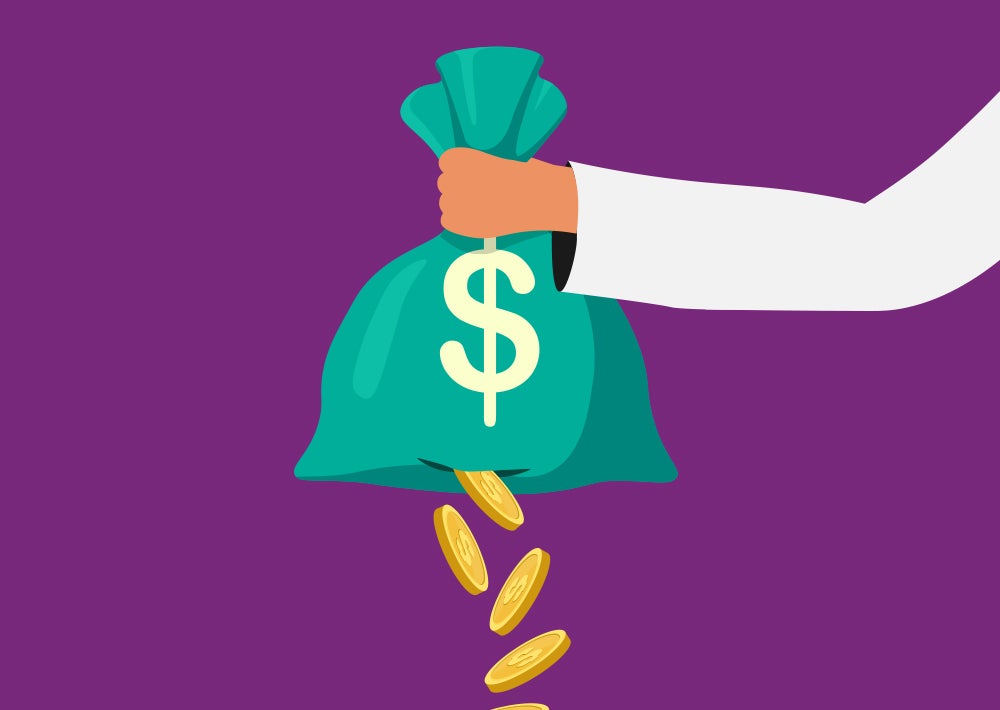The rising cost of care presents ongoing challenges for patients and providers alike. Nearly half of U.S. adults say they have difficulty paying for their healthcare—and that percentage is even higher among those who are older, have low incomes or are underinsured. And when patients struggle to pay for their care, they’re more likely to delay needed services or skip them entirely, which can lead to poorer health outcomes later on.
That’s a troublesome trend for provider groups, particularly as the healthcare industry shifts toward a value-based framework that ties reimbursement rates to care quality. When high costs prohibit patients from seeking care, providers see less demand for their services. That translates into fewer appointments, diminished revenue and poorer overall population health.
The takeaway? Healthcare organizations should focus on helping patients manage their financial responsibility for their care.
Increasingly, hospitals and medical practices are looking for better ways to connect patients with financial assistance, which includes free or discounted health services for individuals who are unable to pay for all or a portion of their care. By connecting eligible patients with the financial assistance they need, provider groups can increase access, minimize cost concerns and provide inclusive, whole-person care at scale.
Read on to learn how healthcare organizations can proactively facilitate financial assistance for their patients.
1. Identify patients who may qualify for support
Under the Affordable Care Act, nearly all nonprofit hospitals are required to offer financial assistance plans or “charity care” to low-income patients. Patients are earmarked as financial-aid candidates through a process called presumptive eligibility, in which hospital staff review numerous factors—including patients’ housing status, program enrollment and prior eligibility information—to determine who qualifies for assistance and who does not.
But when presumptive eligibility screenings are administered manually, there’s a risk that eligible patients may slip through the cracks.
“Without a consistent way to determine who may be eligible for assistance, healthcare organizations risk underserving patients who can’t afford the upfront cost of their care,” says Kristin Roberts, Vice President of Product Management at Phreesia.
To standardize the process, Roberts recommends using technology to automatically screen patients for presumptive eligibility during check-in. By implementing a digital patient intake solution, for example, provider groups can identify self-pay and underinsured patients during registration and immediately flag them for presumptive eligibility. And for healthcare organizations that are not required to offer charity care, technology can help identify patients who might benefit from community-based resources such as financial counseling or government-sponsored assistance programs.
“Helping patients manage the cost of their care is crucial,” Roberts says. “With the right tools, healthcare organizations can streamline presumptive eligibility, save staff time and better address their patient population’s financial needs.”
2. Educate patients about available financial resources
Hospitals with mandated financial assistance policies are required to promote them in several ways, including displaying them during intake, on billing statements and in public spaces throughout the hospital.
Even so, financial assistance often goes underused—largely because patients don’t know about it.
To reverse that trend, healthcare organizations should leverage technology during intake to promote their financial assistance offerings via the channels patients are most comfortable with, such as email and text messages. In doing so, organizations with mandated financial assistance policies can more easily comply with their responsibility to notify and inform patients about the resources available to them.
For example, a nonprofit hospital might configure its intake software to send an automated email to qualifying patients that informs them, in plain language, about the types of aid they may be eligible for through its financial assistance program. Similarly, a healthcare organization without a financial assistance program might send an automated text message that directs patients to outside support, such as free financial counseling or a local aid program.
“By employing technology in the right ways, provider groups can keep patients aware of the resources available to them and increase their likelihood of applying for it,” Roberts explains.
3. Help eligible patients apply for financial assistance
Applying for financial assistance can feel overwhelming to patients—particularly to those who are simultaneously grappling with the demands of treatment. Application procedures are often complex and opaque, making it difficult for patients to know which documents they need to provide or to understand how to track the status of their application.
“Applying for financial assistance can be a confusing process,” Roberts says. “If patients don’t feel supported in requesting aid, they may not do it at all—and that disproportionately impacts those individuals who need it most.”
Indeed, the onus is on provider groups to make the financial-assistance process accessible, inclusive and easy to navigate. That’s where technology comes into play.
With digital outreach tools, healthcare organizations can seamlessly share aid-application information with eligible patients post-discharge. They can summarize the information patients need to submit, provide a link to the financial-aid application and even let patients upload photos of important documentation, such as proof of income. Patients can complete the application at their convenience from a phone or computer, and their information will be automatically sent to staff or financial counselors who can submit the application on the patient’s behalf.
Put simply, automating the financial-assistance process enables healthcare organizations to deliver a streamlined experience that minimizes confusion and helps patients easily apply for the aid available to them.
“We know the cost of care is a challenge for many patients today,” Roberts says. “Why not use technology to connect them with the financial resources they need?”
Learn how Phreesia can help you identify patients who may qualify for financial assistance, share information about their eligibility for aid and discreetly prompt them to apply for it.





